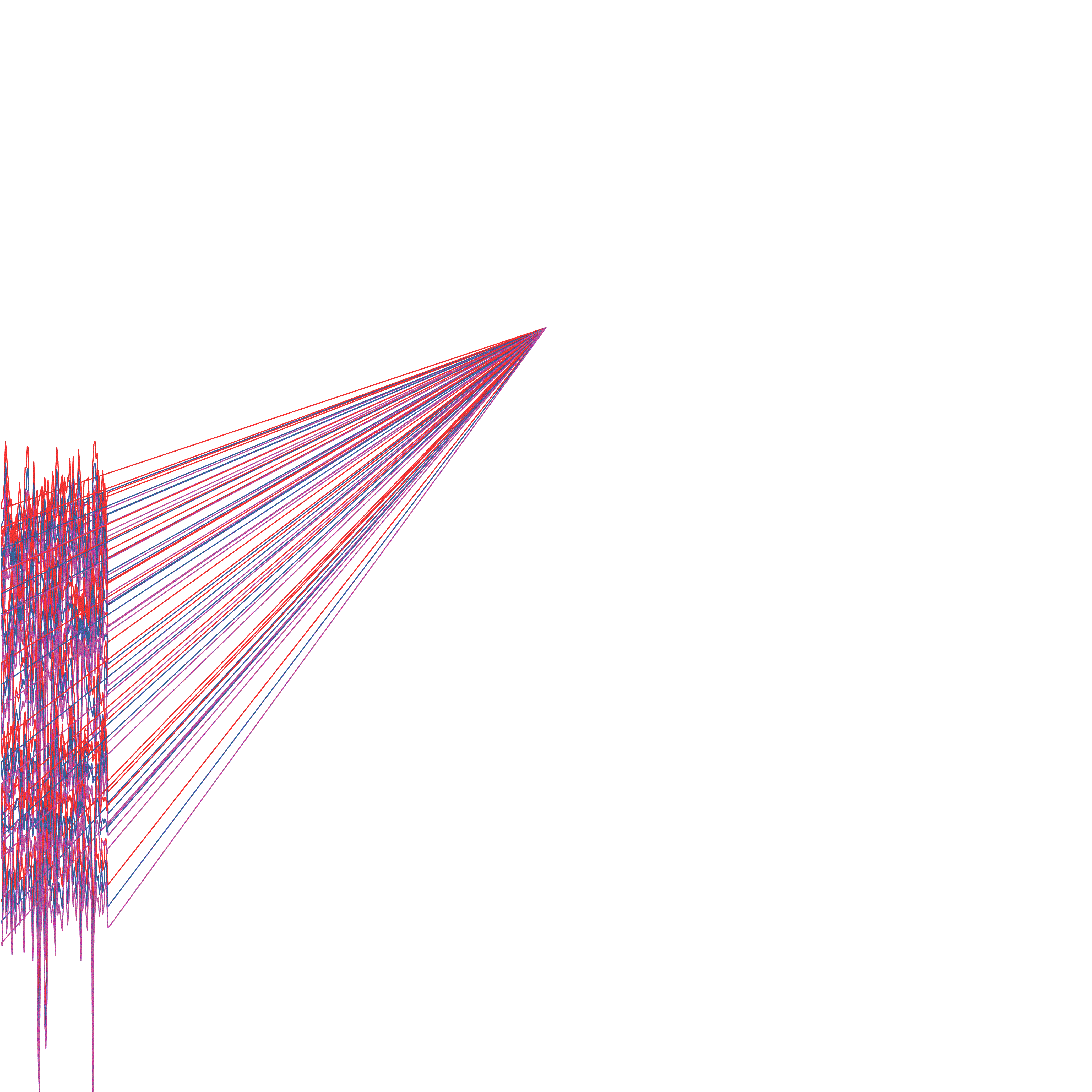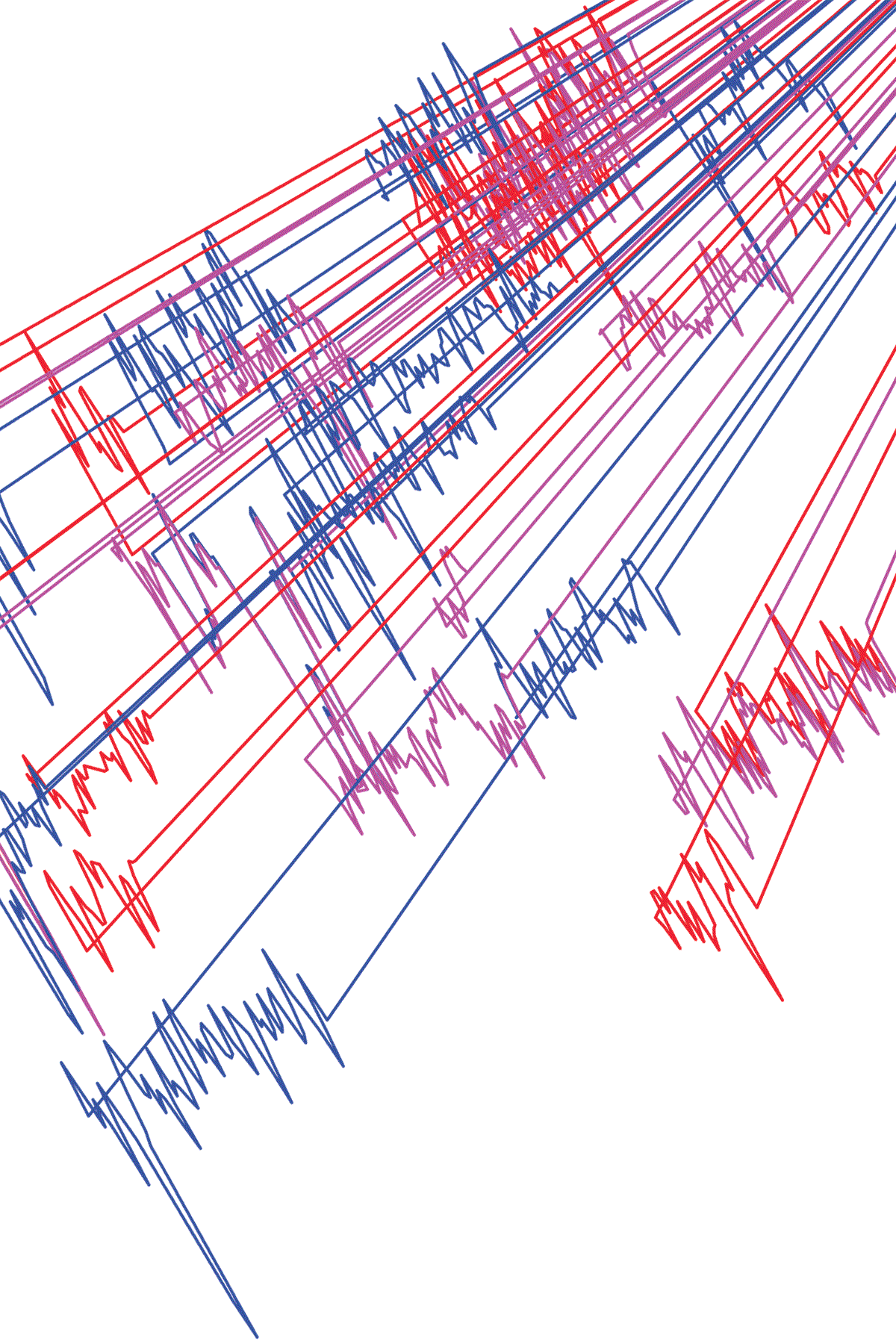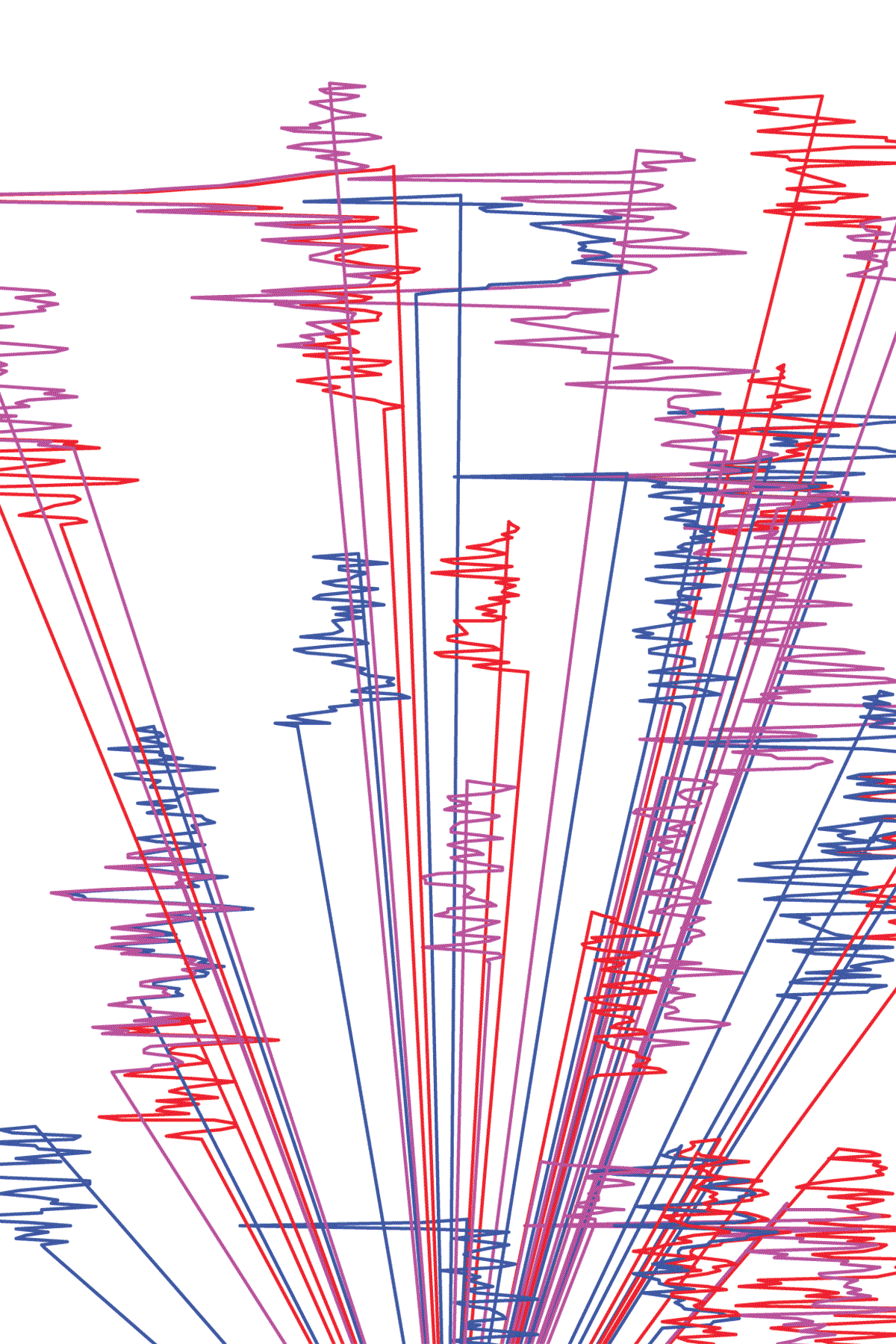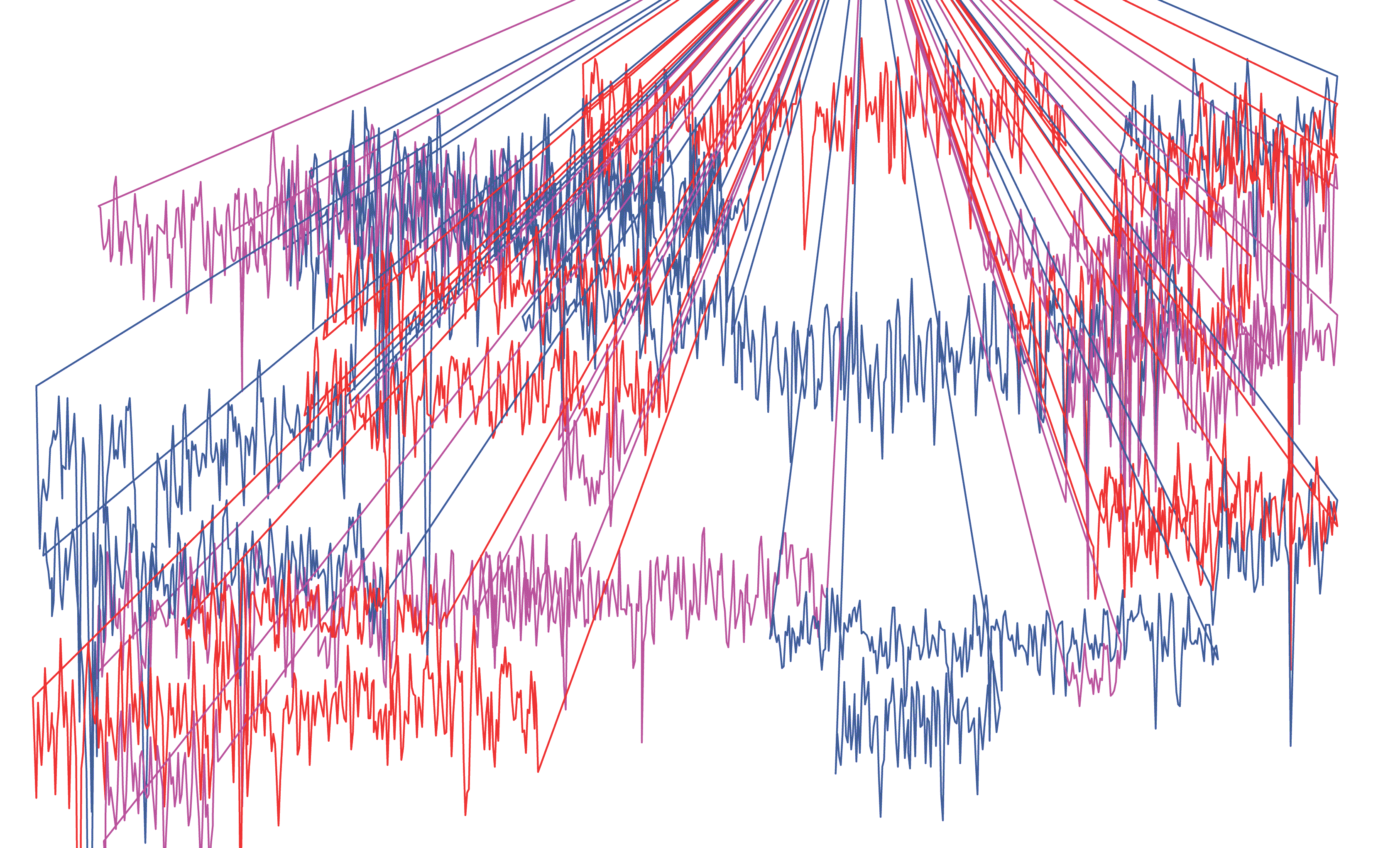The color of YBCO
The chemical compound yttrium barium copper oxide, shortened to YBCO, was the first material known to superconduct above the boiling point of liquid nitrogen (77 K) which marked an impressive jump in the field of material physics. Prior to the 1987 breakthrough, superconducting materials required much more expensive and rare cooling agents to reach a superconducting phase. YBCO seemed like the answer to applying superconductivity to all sorts of systems. YBCO can be synthesized with relative ease and can levitate a magnet with no problem however it has not brought about the change that it seemed like it could due to some key flaws in its applicability.
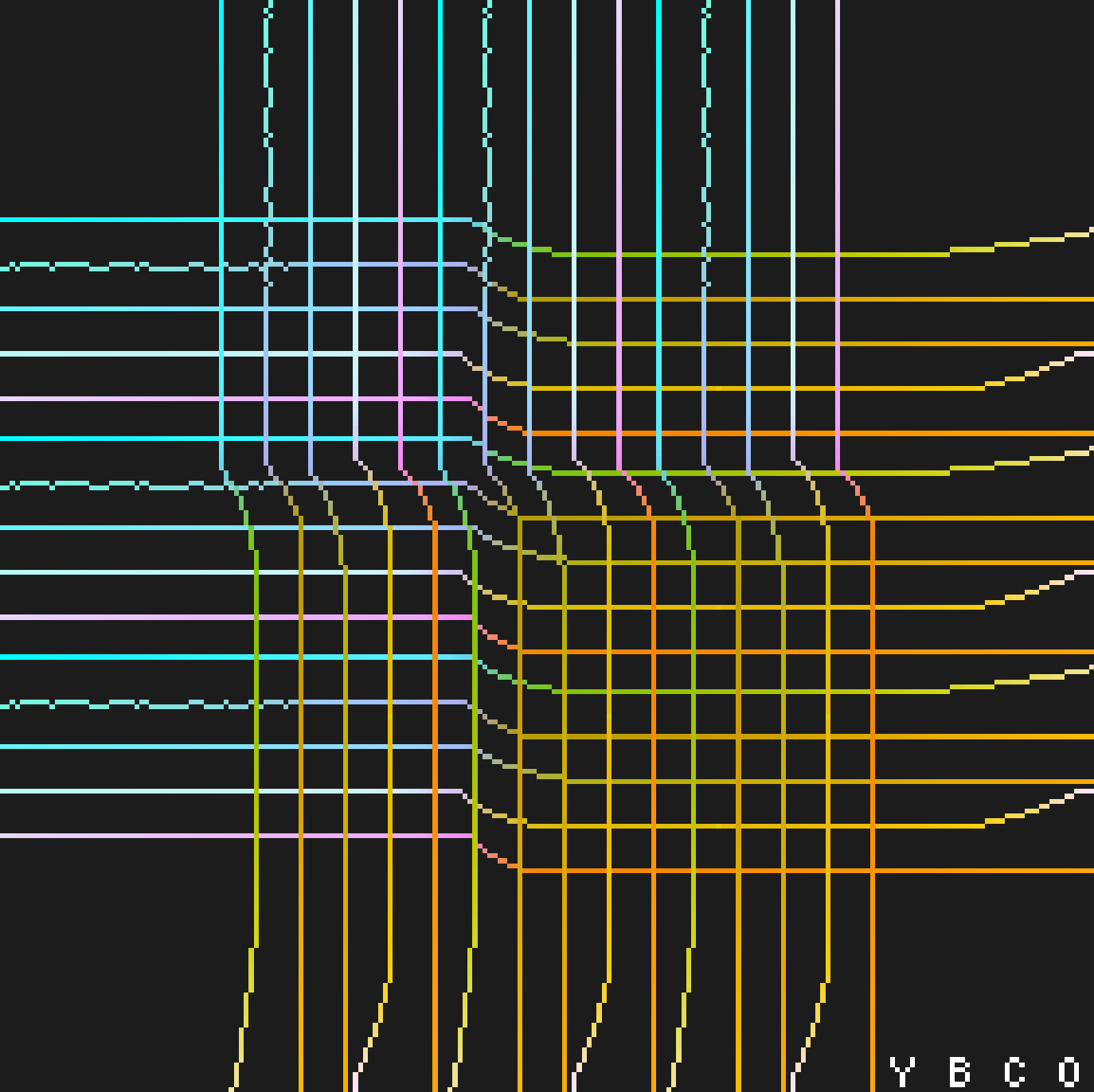
This image is created directly from a NumPy array. The pattern that emerges is from our sample superconducting. The resistance of our YBCO sample drops to near zero as it transitions to its superconducting phase. The data is not only represented in the x,y dimensions but also in the RGB space.
Linear perspective and Johnson Noise
In 1926, John Johnson discovered that resistors have an inherent low level of noise with power proportional to temperature. Harry Nyquist, who worked in the same labs as Johnson, developed the theory behind the observed noise. Nyquist theorized that small thermal agitations were behind the electronic noise and derived equations that describe the noise. The data was collected using a spectrum analyzer. The following animations were created with Python and Postscript. The central visual effect is the addition of linear perspective achieved by tethering each segment of data to a single point.
